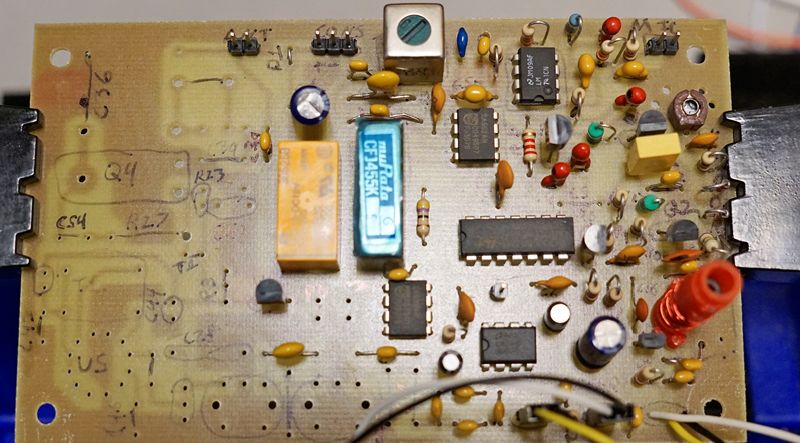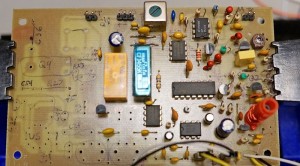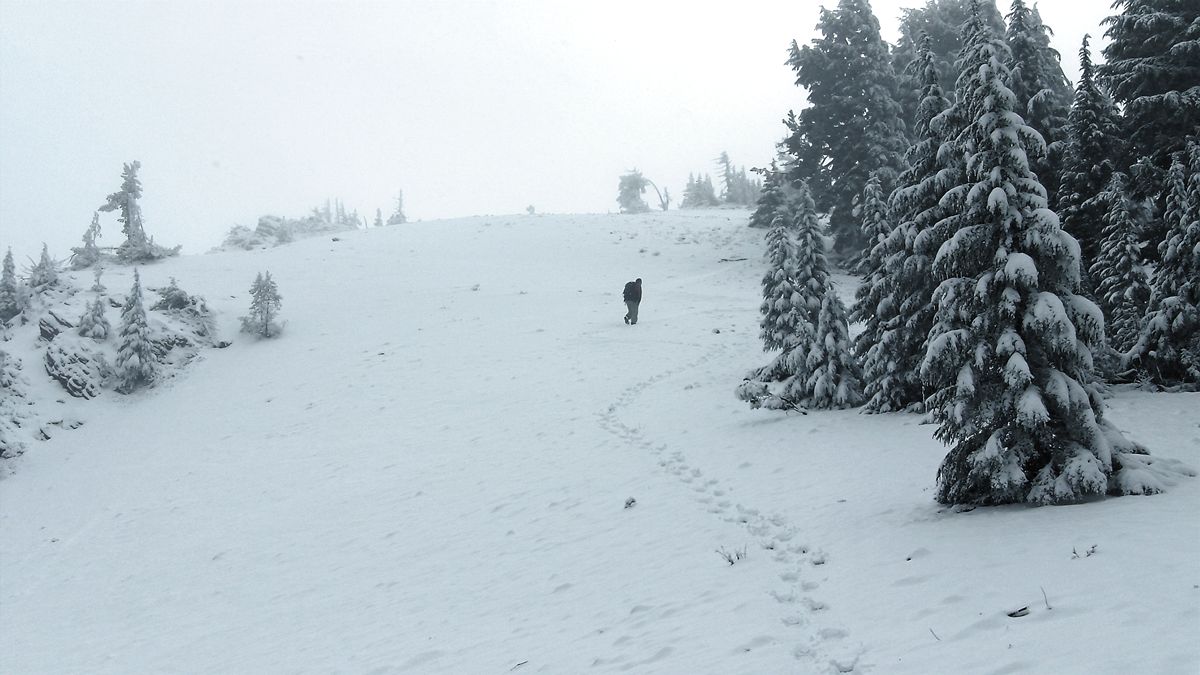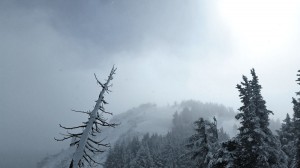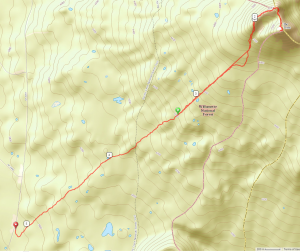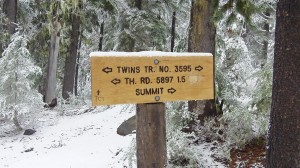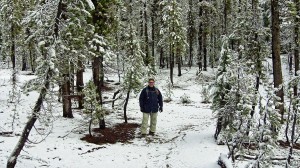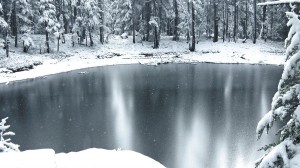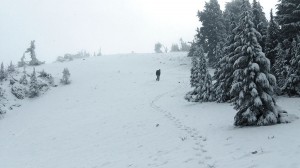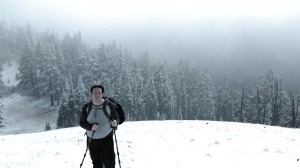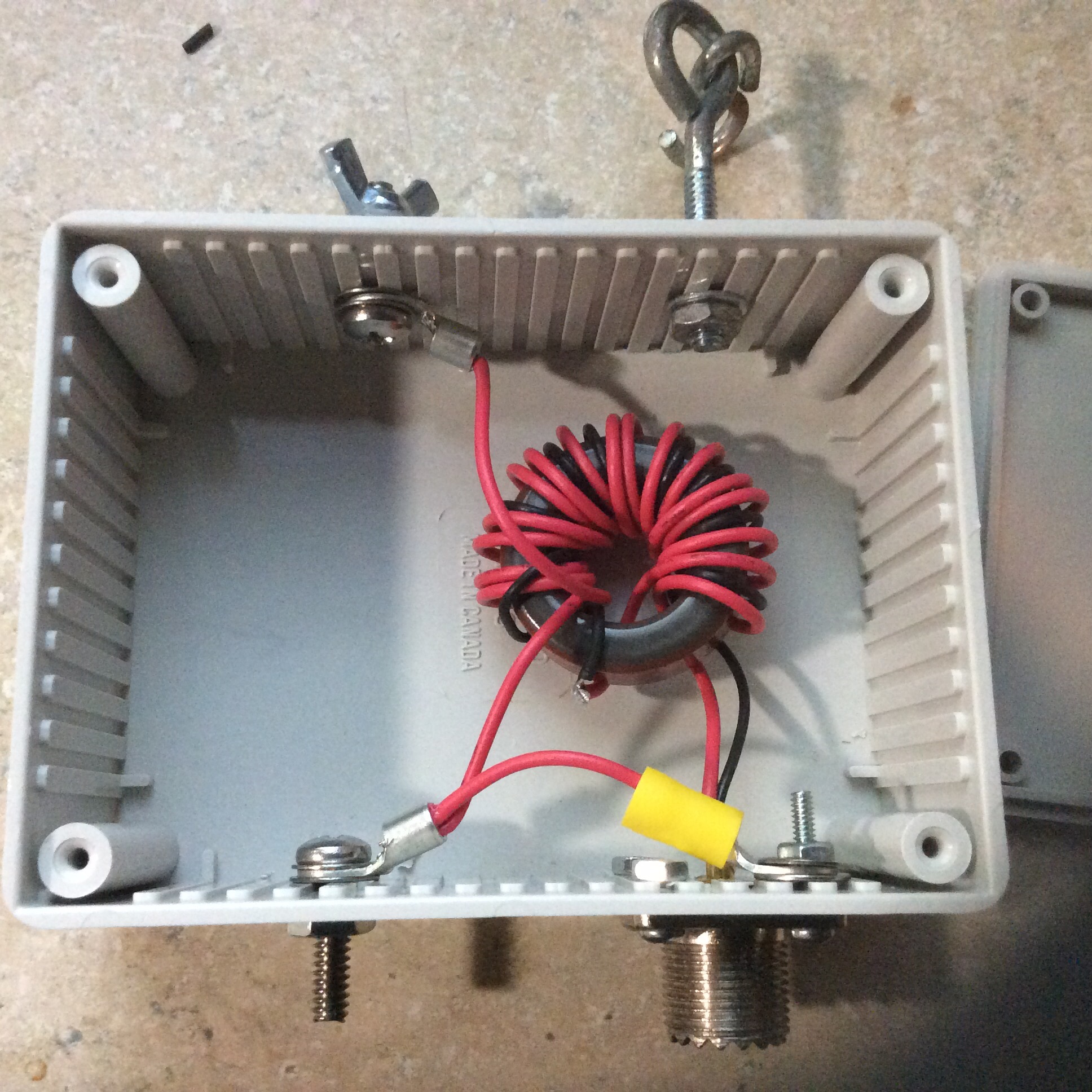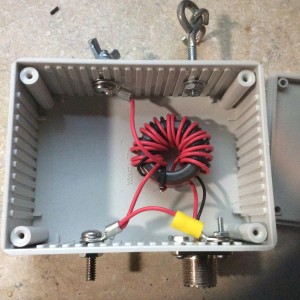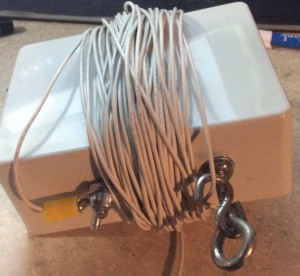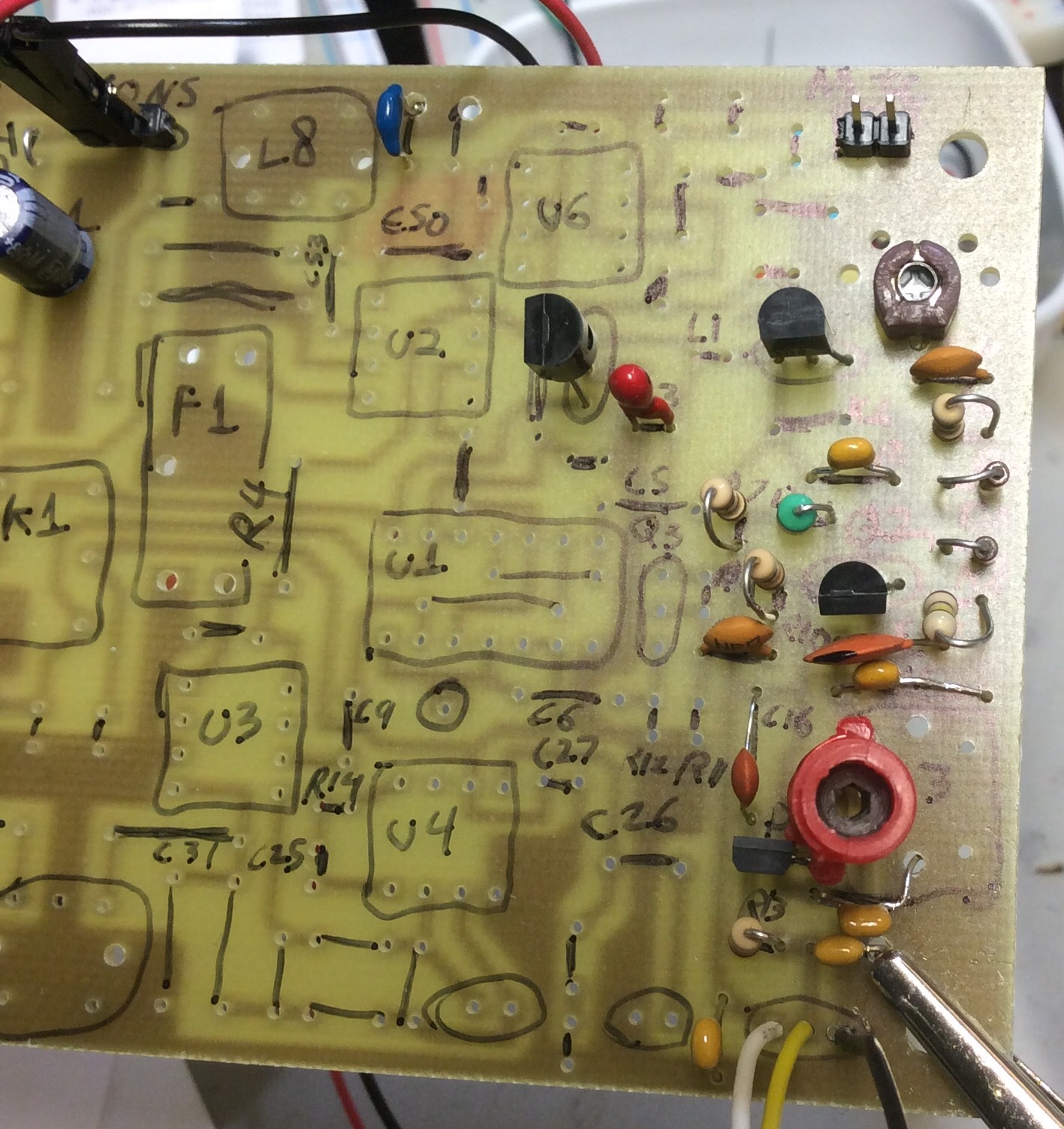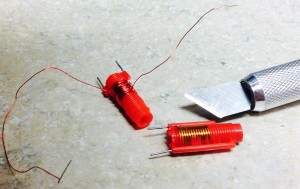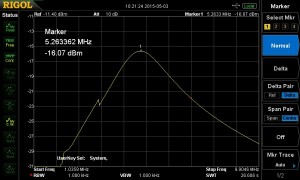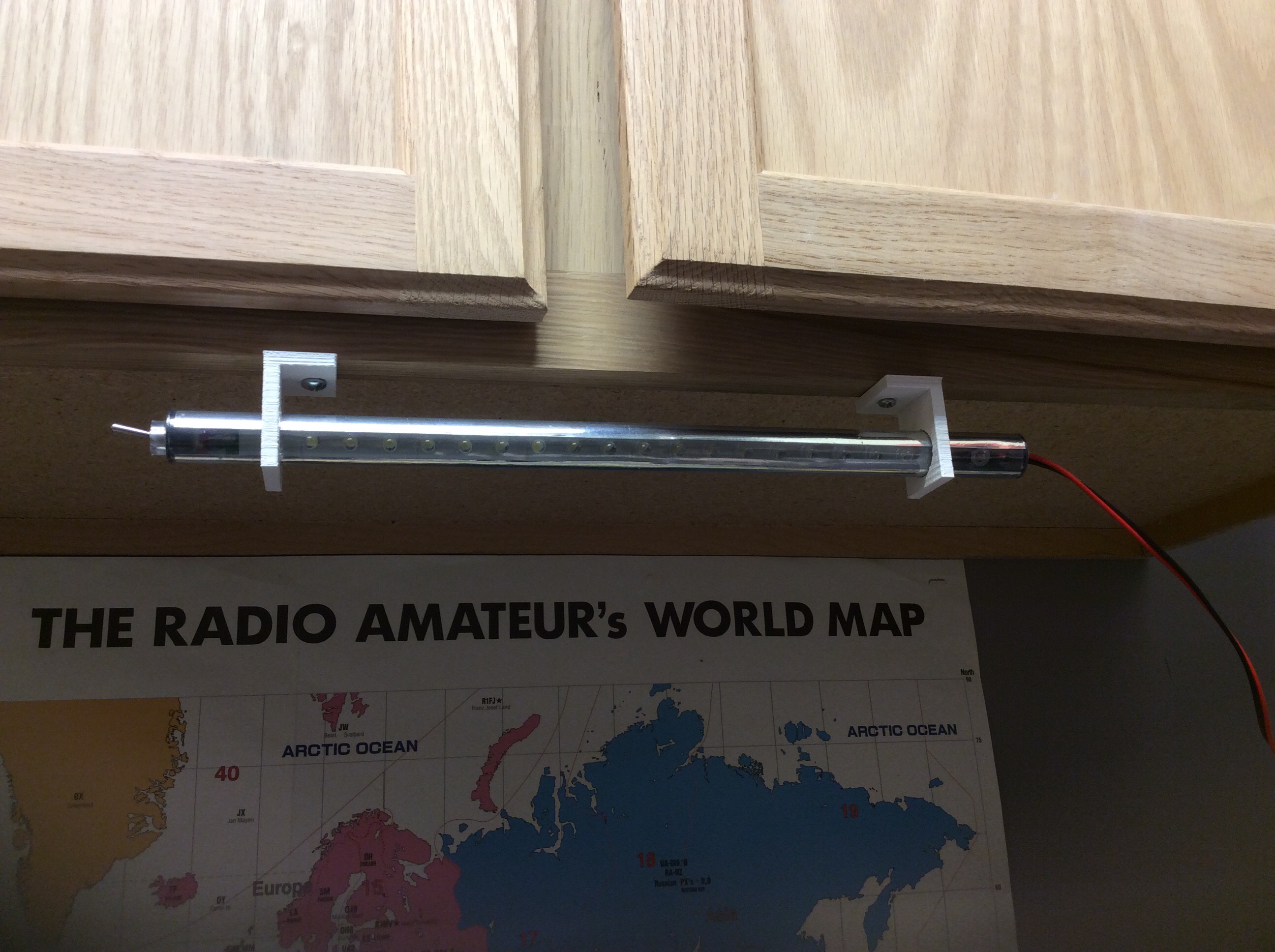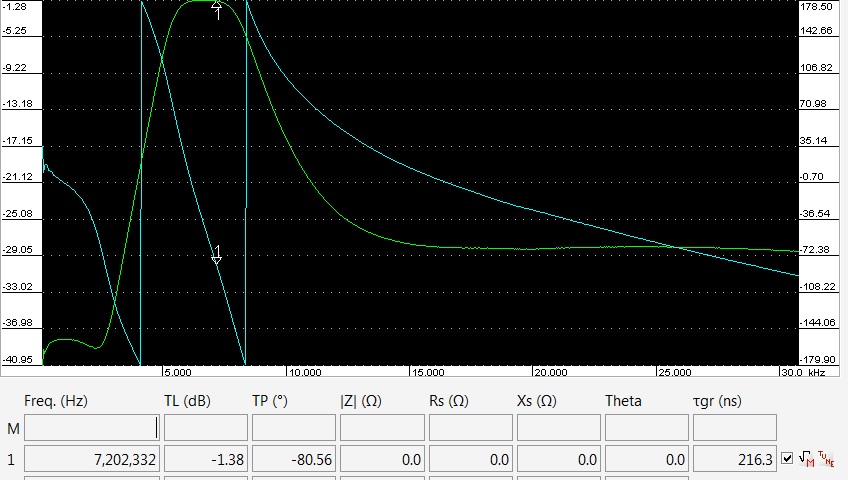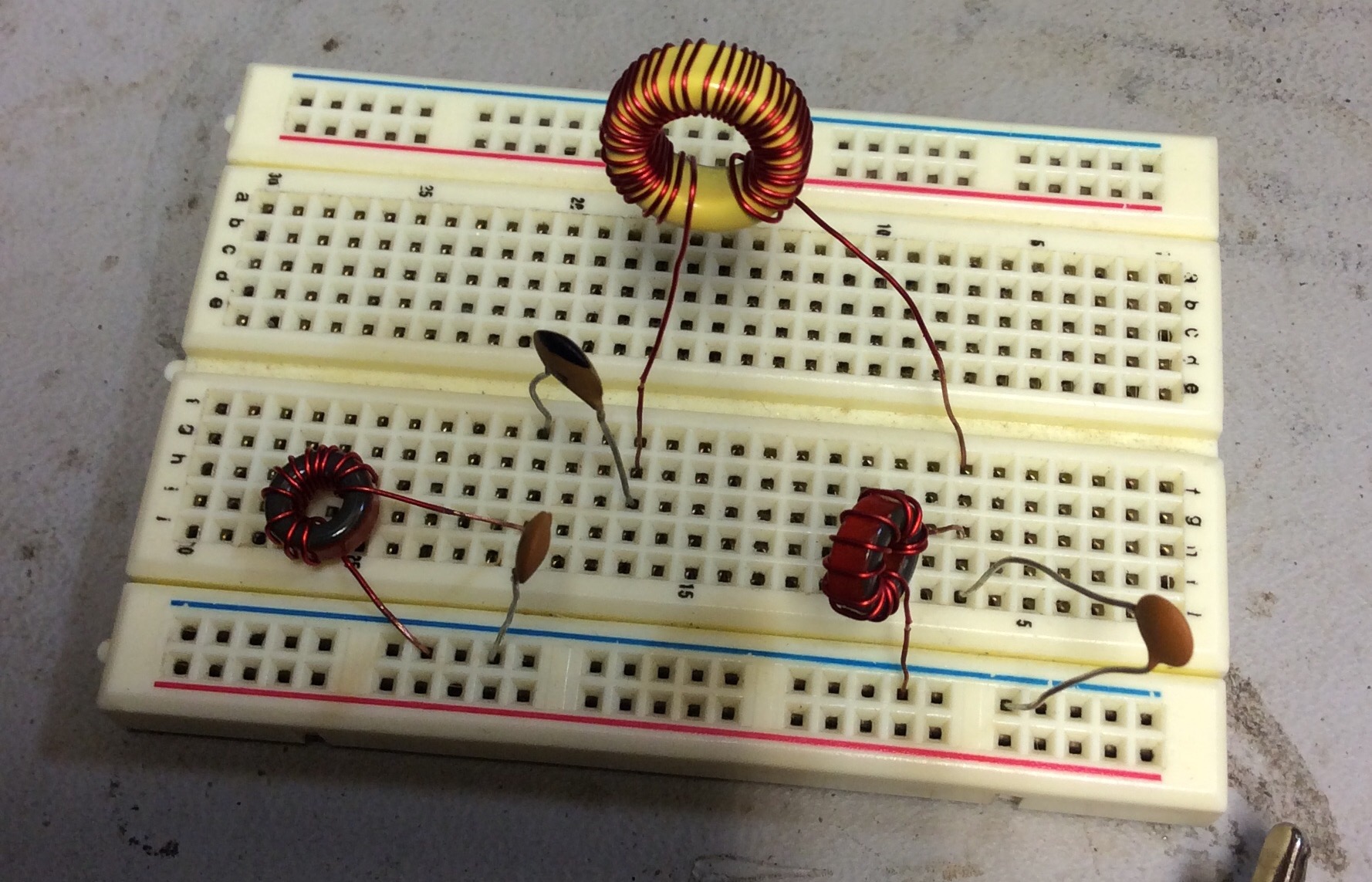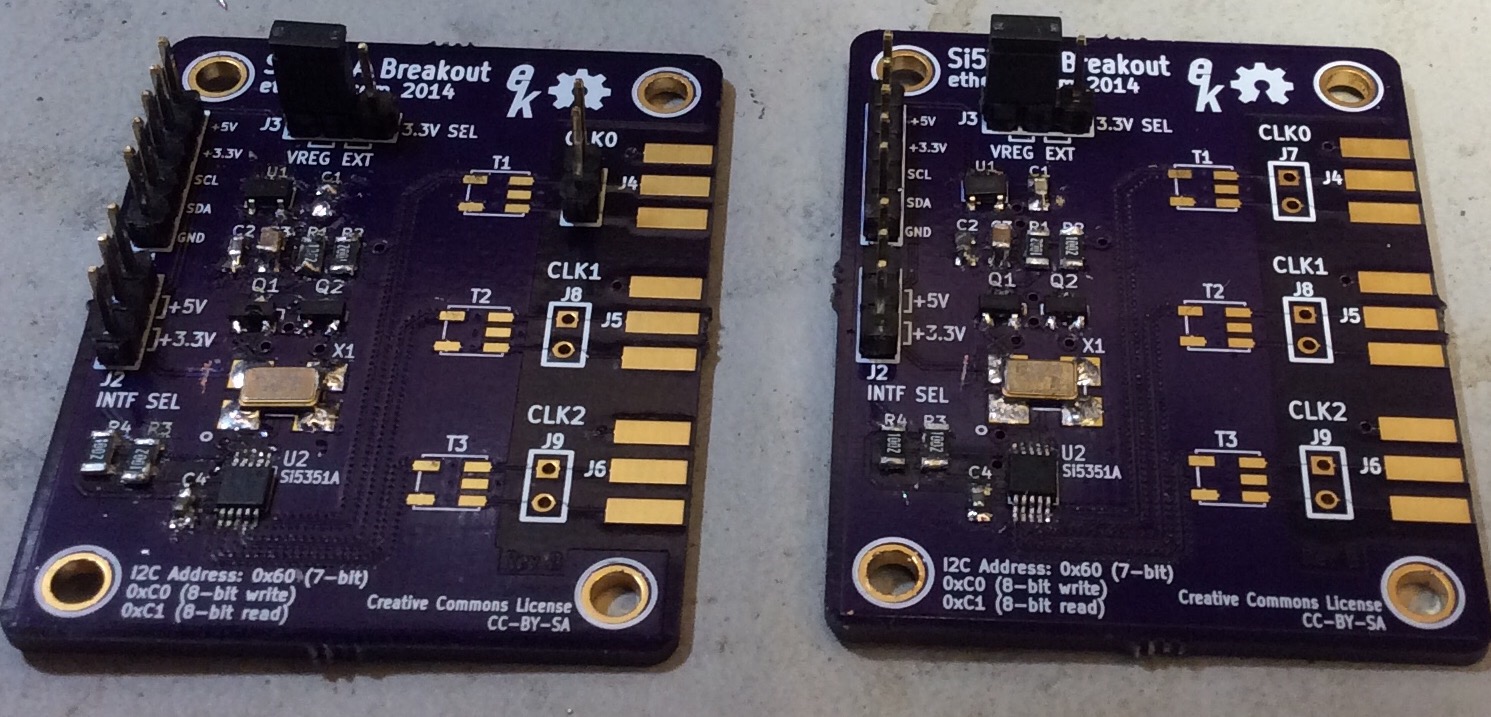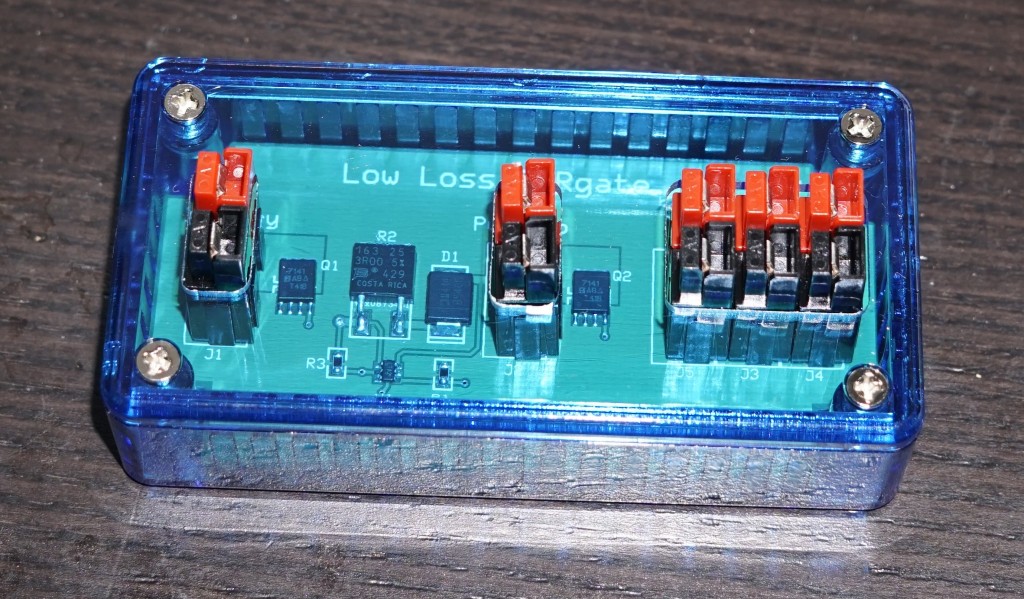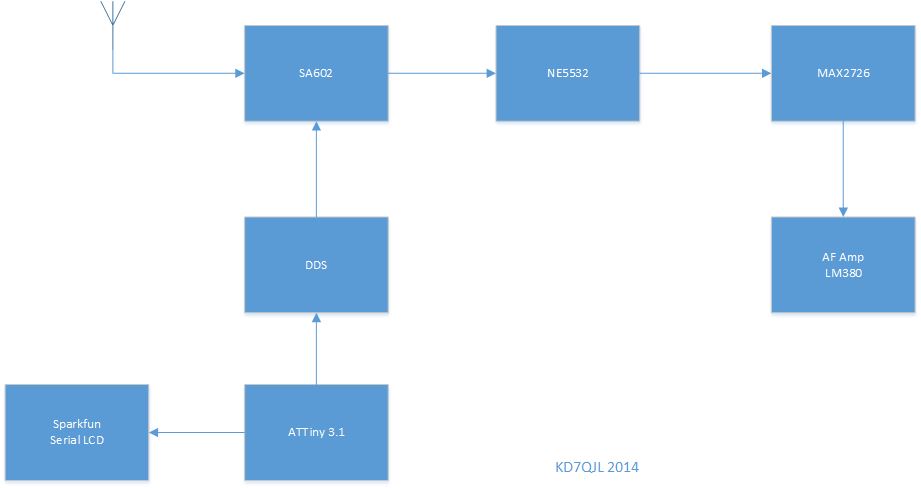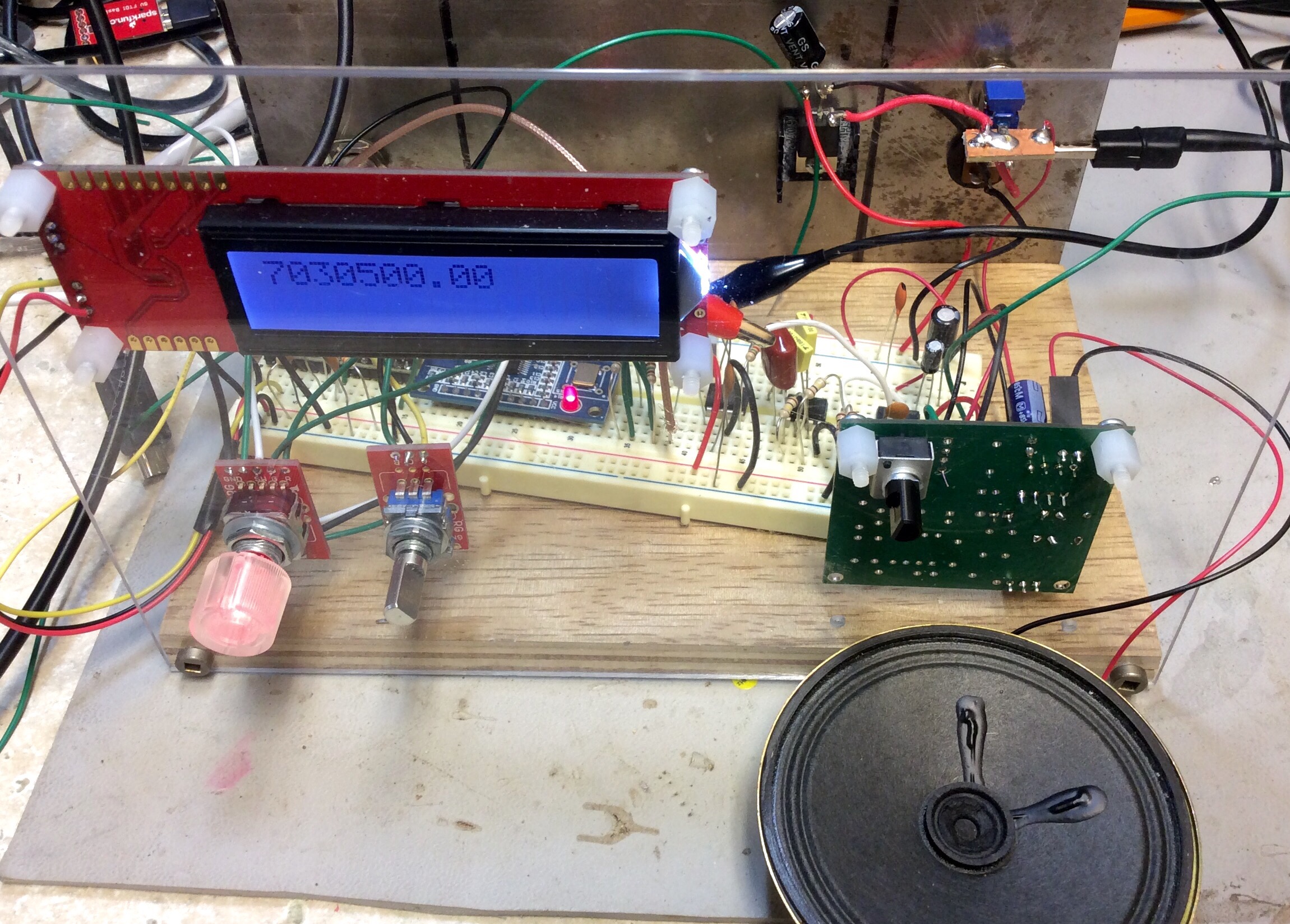I located a suitable (and cost effective) IF filter from China on ebay. It took me 3 months to take delivery of this part. The part was pulled from some existing piece of equipment. I’m substituting a murata CFJ455K for the original IF filter. The only difference is the case is ~2mm longer. Unfortunately, this means it’s not pin compatible with the original drilled holes. The pcb has the space to drill new holes and drop the filter in.
I had not expected the IF filter to be easier to find than the CA3020A. I’ve made five purchases of this unit on Aliexpress, and not a single one of the sellers actually has one. If one is willing to pay $35 to $50, luck might be better. At this point, I”m thinking that a custom drop-in amplifier may be a better approach. A simplified push pull amplifier with a buffer will probably suffice as not all capabilities of the CA3020A are used.
The receiver portion is mostly finished. The LO and VFO are aligned. The LO output is too high, it will need to be reduced by changing the value of C5.

